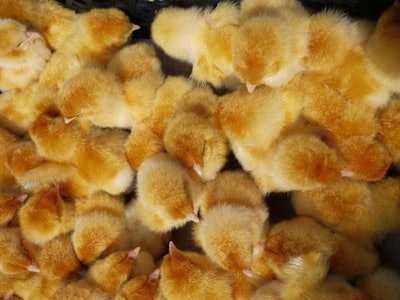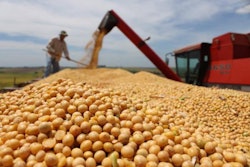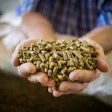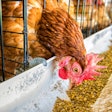
The newborn chick is hatched with sufficient nutrient reserves, in the form of residual yolk, to prevent starvation and increase its chances of survival during the first couple of days. But, in modern production methods, this is hardly enough. Not only do we seek exceptionally high early growth rates, but we also have recently decided to remove any in-feed gut health conditioning agents (antibiotics, antimicrobials, ionophores, chemical anticoccidials) previously used with success as growth-promoting agents.
Even when these agents were used freely, a high-density early prestarter had been shown to enhance growth and overall lifetime performance. Now, with all such gut health support removed from the picture, either by law or voluntarily, the need to redesign the early prestarter broiler diet is pressing again.
Feed digestibility and gut microbiota
To better feed the early broiler without the usual gut health conditioning we must appreciate the interlaced nature of digestive capacity and early establishment of microbiota — and how this affects gut health and lifetime performance. Newly hatched chicks have an immature digestive system that adapts rapidly to complex carbohydrates and proteins (that is, the conventional feed we offer to broilers), but this is not rapid enough for the modern broiler. Indeed, research has shown that during the first days of life, nutrient digestibility can be lower by as much as 10-15 percent compared to digestibility in older broilers. This means that any undigested feed passes down to the hindgut, where it feeds bacteria (good and bad ones) and parasites. Clostridia, for example, are proteolytic bacteria, and they thrive from excess undigested protein material.
To complete the puzzle, we must also realize that the newborn chick is hatched with a naïve digestive ecosystem; it depends on the environment for the establishment of its gut microflora. This happens while in the hatching tray, the transfer boxes and the first few hours after placement. Here, nutrition can play a significant role. First, it can be the source of beneficial bacteria (preferably), or the source of pathogens (unfortunately). It all depends on feed design (additives), treatment (heat) and ingredient selection (quality, microbial load, etc.). Second, it can help promote the establishment of beneficial microbiota at the expense of pathogenic one. For example, a paucity of undigested protein will limit the growth of clostridia, while a supply of selected functional fibers can enhance the growth and establishment of beneficial lacto- and bifido-bacteria.
In piglet nutrition, where my expertise arises from, we follow two main routes in controlling gut pathogens. This methodology was developed when in-feed antibiotic growth promotants were still allowed, and it worked even where therapeutic treatments largely failed. First, we tried to control pathogens by a number of additives that killed them (antibiotics), modified their balance (zinc oxide), or inhibited their growth (organic acids). But, this was not always enough. Thus, we combined the above with a super digestible feed: one that left very little for any and all pathogens (or even beneficial bacteria). In essence, we tried to starve them. This seemed to work, but now, we no longer have antibiotics to control subclinical pathogenic problems, and as such we have realized we must also apply a third strategy, one that actually feeds the beneficial bacteria.
Broilers grown without the common gut health conditioning agents can benefit from a similar approach: control the pathogens by killing or starving them, while feeding the good guys. This seems easy enough to accomplish but it is difficult to properly balance. And, it is quite expensive, as it requires a plethora of new ingredients. Most conventional early broiler diets contain fishmeal as the most complex (or rather the only specialty) feed ingredient. But, not only are the usual inclusion levels not enough, but also other ingredients should be used to replace protein from soybean meal.
Specialty ingredients
Specialty ingredients that often find their way into super highly digestible broiler prestarters include animal plasma, wheat gluten, poultry by-product meal and pea protein, to name but a few, all of which are highly digestible yet more expensive than conventional proteins. Some of these ingredients offer significant “side-effects” beyond high digestibility. Such is the case for animal plasma that has an exceptionally high concentration of immunoglobulins and other biofactors that further promote gut health. The same can be said about butyric acid that has a gut trophic effect in addition to its acting against bacteria. Such specialty dual-action ingredients should be evaluated based on their total contributions.
At the end, one needs to evaluate not only the cost of feed but also the benefit in terms of enhanced growth and gut health. In one controlled study, a highly digestible diet containing 2.5 percent animal plasma was offered for the first five days post-hatch; chick growth was enhanced by almost 35 percent. At market age (42 days), broilers fed the animal-plasma based prestarter diet during the first five days were about 10 percent heavier than broilers that had been on a conventional formula. There is more on-going research trying to quantify the effects of high-digestible prestarter formulas, but it appears it is worth the expense.















